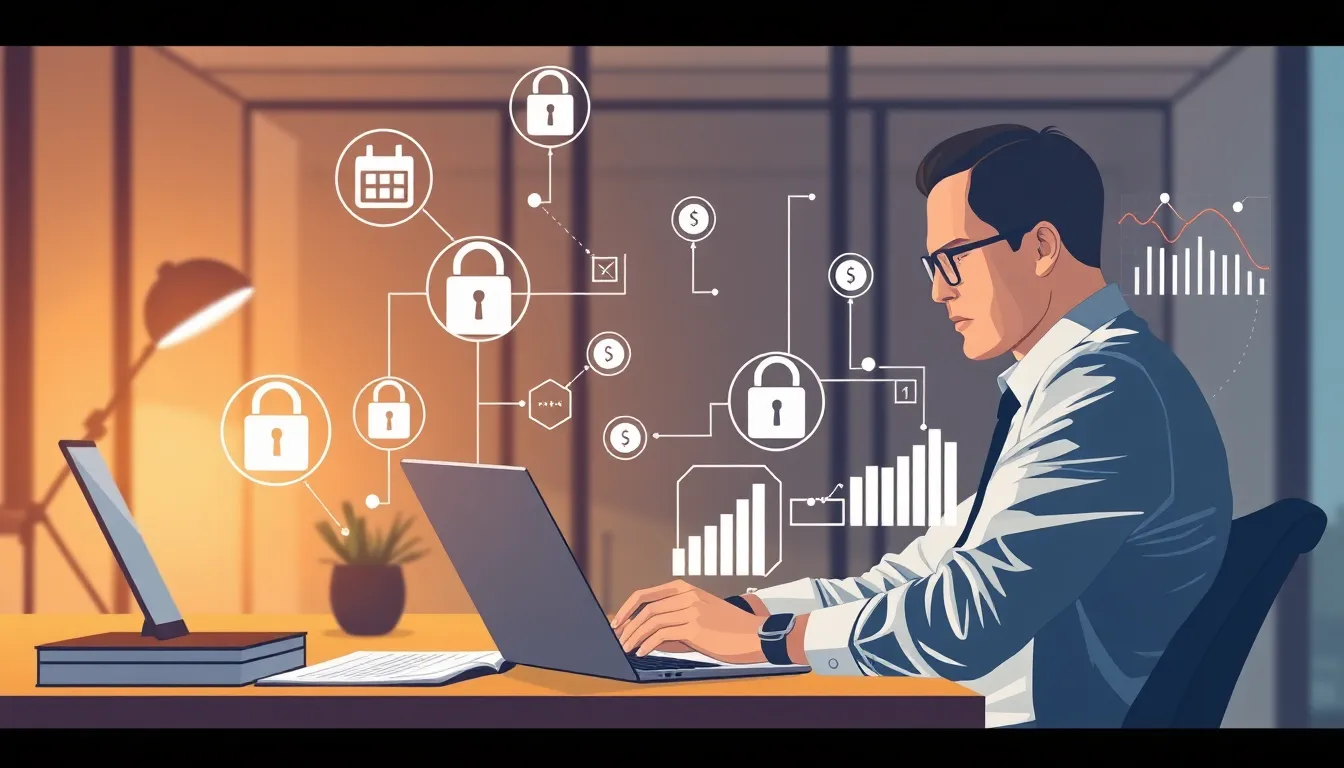Blockchain Audit: Essential Steps to Secure Your Digital Assets Today

In a world where “trust but verify” has become the mantra of the digital age, blockchain audits are stepping into the spotlight like a superhero in a spandex suit. They’re not just for tech geeks anymore; they’re essential for businesses wanting to keep their digital assets secure and transparent. Imagine having a trusty sidekick that ensures every transaction is legit, and every block in the chain is as solid as grandma’s secret cookie recipe.
As companies dive headfirst into the blockchain revolution, the need for thorough audits grows. These audits don’t just protect against fraud; they also enhance credibility and boost investor confidence. So, if you’re ready to turn your blockchain from a wild west frontier into a well-oiled machine, you might want to stick around. This guide will explore the ins and outs of blockchain audits, and who knows? You might just find yourself laughing while learning how to secure your digital future.
Blockchain Audit
A blockchain audit assesses the integrity, security, and performance of blockchain networks. Conducting these audits uncovers vulnerabilities and ensures compliance with relevant regulations.
Definition of Blockchain Audit
A blockchain audit refers to a systematic examination of blockchain transactions and processes. This review identifies anomalies, ensures proper functioning, and verifies adherence to protocols. Auditors analyze smart contracts, transaction histories, and consensus mechanisms. Each element undergoes scrutiny to determine reliability and effectiveness. By assessing the entire blockchain ecosystem, audits promote a safer digital landscape.
Importance of Blockchain Audit
Blockchain audits enhance security by identifying potential threats before exploitation. Protecting assets and sensitive information fosters trust among stakeholders. Transparency provided through audits attracts investors, demonstrating commitment to accountability. Regulations in various jurisdictions often mandate these audits, highlighting their significance in maintaining compliance. Moreover, regular auditing can improve operational efficiencies, resulting in reduced costs over time.
Key Components of Blockchain Audit

Blockchain audits consist of several key components that ensure transparency and security in digital transactions. Understanding these components is crucial for maintaining the integrity of blockchain systems.
Smart Contracts
Smart contracts represent self-executing agreements with the terms directly written into code. Auditors evaluate these contracts for logic flaws that might cause unintended consequences. A thorough examination includes checking conditions and operations, ensuring they operate as intended. Testing edge cases enhances security by identifying vulnerabilities that could be exploited. Compliance with legal standards is also part of the audit process, assuring that contracts hold validity within applicable jurisdictions.
Consensus Mechanisms
Consensus mechanisms establish trust across decentralized networks. These frameworks verify transactions without a single authority, ensuring that all parties reach agreement. An audit typically assesses the efficiency and security of these mechanisms to prevent malicious activity. It verifies that the consensus process aligns with the system’s design goals. Understanding performance metrics helps identify bottlenecks or weaknesses, ensuring smooth operation. Regular evaluations of these processes bolster confidence among stakeholders and confirm the reliability of the blockchain architecture.
Benefits of Conducting Blockchain Audits
Conducting blockchain audits offers numerous advantages for organizations leveraging this technology. Key benefits include enhanced transparency and increased security.
Enhanced Transparency
Transparency stands as a core benefit of blockchain audits. Auditors examine transaction histories and smart contracts, ensuring they comply with regulatory standards. This analysis fosters trust among stakeholders by providing clear insights into operations. Validating the integrity of transactions reassures investors, as potential discrepancies become evident. Data integrity and availability contribute to smoother business relationships. By enhancing transparency, organizations demonstrate accountability, which ultimately attracts more users and investors to the ecosystem.
Increased Security
Increased security remains a critical outcome of blockchain audits. Auditors identify vulnerabilities within smart contracts and consensus mechanisms, addressing potential threats proactively. Regular audits help discover logic flaws that could lead to exploitation, making systems safer. By ensuring security measures align with best practices, companies enhance their defenses against fraud and cyberattacks. Strengthening blockchain security fosters stakeholder confidence, leading to a healthier investment environment. Robust security measures not only mitigate risks but also fortify the organization’s overall operational framework.
Challenges in Blockchain Auditing
Blockchain auditing presents unique challenges that auditors must navigate to ensure accuracy and reliability. Two significant obstacles include complexity and regulatory compliance.
Complexity and Technical Knowledge
Blockchain technology’s intricate nature demands advanced technical expertise. Auditors encounter challenges such as understanding cryptographic algorithms, consensus protocols, and smart contract behavior. Each of these components holds critical importance in evaluating the blockchain’s overall integrity. Without a strong grasp of these technical aspects, auditors risk misinterpreting data, which could lead to inaccurate conclusions. Furthermore, the rapid evolution of blockchain technologies requires continuous learning to stay current. Auditors must adapt to new developments, which adds to the complexity of the auditing process.
Regulatory Compliance
Adhering to regulations across jurisdictions poses a significant challenge for blockchain audits. The legal landscape surrounding blockchain remains fluid, with diverse requirements existing in different regions. Jurisdictions often implement varying data protection laws and anti-money laundering regulations. Navigating this complex regulatory framework requires auditors to be well-informed about the specific compliance requirements relevant to their clientele. Failure to comply can lead to significant penalties and damage to a company’s reputation. Consequently, constant monitoring of regulatory changes and effective communication with legal teams become essential for successful audits.
Conclusion
The significance of blockchain audits in today’s digital landscape cannot be overstated. They serve as a crucial mechanism for enhancing security and transparency while building trust among stakeholders. By systematically examining blockchain transactions and processes, organizations can identify vulnerabilities and ensure compliance with regulations.
Regular audits not only protect against fraud but also improve operational efficiencies and reduce costs. As blockchain technology continues to evolve, staying ahead of potential threats through diligent auditing will be essential. Embracing these practices will ultimately foster a more secure investment environment and drive confidence in digital assets.




